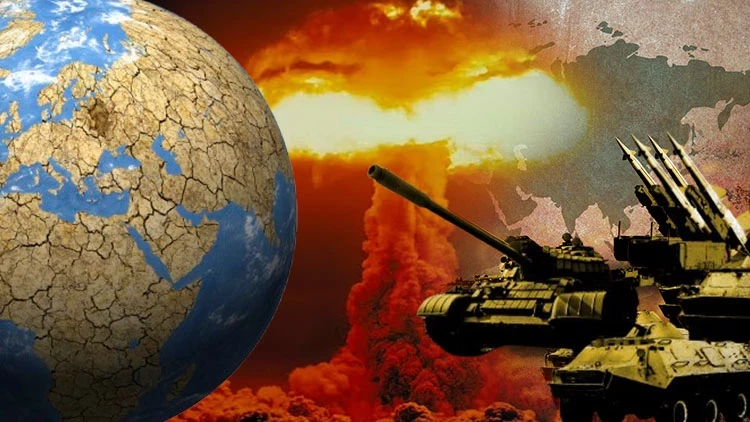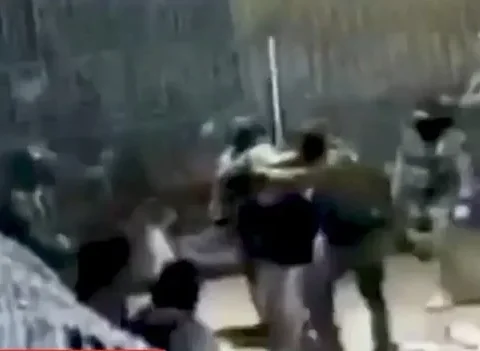Article Summary – For a brief moment after the Soviet collapse, it looked like World War III had been taken off the table.
-That illusion is gone.
-Today, five flashpoints could drag nuclear-armed powers into a global war as soon as 2026: Russia’s grinding campaign in Eastern Europe, a Chinese move on Taiwan and the South China Sea, a still-unfinished Korean War on a nuclear peninsula, Iran’s collision course with Israel, and the volatile India–Pakistan rivalry in South Asia.
-Each theater is now wired into great-power competition—meaning a miscalculation in any one of them could light the fuse for everyone.
World War III in 2026? These 5 Flashpoints Should Worry Washington
Throughout the Cold War, it was commonly envisioned that World War III would break out in Eastern Europe, as dramatically depicted in bestselling novels such as “The Third World War: August 1985” (published in 1980) by the late General Sir John Winthrop “Shan” Hackett and “Red Storm Rising” (published in 1986) by the late Tom Clancy, as well as nuclear apocalyptic movies such as “The Day After” and “Threads.”
Thanks to the Soviet Union’s collapse in 1991 and the resultant so-called “peace dividend,” it was commonly assumed that the specter of WWIII had permanently ended.
However, in the immortal words of the late Richard “Demo Dick” Marcinko, founding commander of SEAL Team 6, “Thou shalt never assume.” Today, thanks to renewed Great Power geopolitical competition, the threat of a nightmarish global cataclysmic conflict looms larger than ever.
With that in mind, National Security Journal now examines five hot spots where WWIII could potentially break out in 2026.
WWIII Hot Spot #1: Eastern Europe
The more things change, the more they stay the same.
Even in the post-Soviet era, Russia still has the world’s largest nuclear arsenal, with 5,459 nuke warheads according to World Population Review.
And in addition to recalcitrantly continuing the “special military operation” against Ukraine, Putin and his Kremlin cronies, such as Sergei Lavrov (the Foreign Minister) and Dmitriy Medvedev (Deputy Chairman of the Security Council of the Russian Federation), have repeatedly verbalized nuclear threats against NATO in particular and the West in general.
And in a potential act of foreshadowing, Russia has engaged in multiple provocative acts against NATO member Poland, which, for the Polish people, undoubtedly rings eerily of the Soviet invasion in 1939 and the Russo-Polish War of 1919-1921.
WWIII Hot Spot #2: The Taiwan Street and/or South China Sea
The People’s Republic of China (PRC) has the world’s third-largest nuclear arsenal.
With an estimated 600 warheads. Emboldened by the invasion of Ukraine by their former adversary turned erstwhile ally, Russia, the PRC’s prospects for invading Taiwan sooner rather than later.
Beijing constantly commits acts of aggression against America’s allies in the U.S. Indo-Pacific Command (USINDOPACOM) region, namely Taiwan, the Philippines, India, Japan, and Vietnam (which, incidentally, was the last country to have fought a major war with the PRC, via the Sino-Vietnamese War of 1979).
The China threat is the whole raison d’être for “the Quad,” a multinational alliance consisting of the US, Japan, Australia, and India (itself a nuclear power, as we shall discuss shortly).
WWIII Hot Spot #3: The Korean Peninsula
As noted by the Missile Defense Advocacy Alliance (MDAA), “Despite it’s [sic] struggling economy, North Korea invests significant financial resources into its weapons of mass destruction program in an effort to deter the United States and its allies. The DPRK [Democratic People’s Republic of Korea] refuses to cooperate with the international community in efforts to monitor and roll back its nuclear program.”
It must be remembered that the Korean War—which was the first “hot war” of the Cold War in which the United States directly participated, as well as the first (and thus far the last) time the U.S. fought directly against PRC forces—never officially ended via a peace treaty but rather was merely placed on a pregnant paused via an armistice.
What’s more, the DPRK is allied with nuclear-armed Russia and China, as well as a nuclear aspirant, which we shall discuss next.
WWIII Hot Spot #4: The Middle East
More specifically, the Islamic Republic of Iran. Although the US Air Force’s B-2 bomber strikes of Operation Midnight Hammer severely degraded Iran’s nuclear weapons program, Iran hasn’t yet given up on developing nukes.
That doesn’t sit well with the State of Israel, which currently remains the Middle East’s only nuclear-armed nation.
Given the fact that Iran is also part of the unholy alliance with Russia, China, and North Korea, an Israeli-Iranian nuclear exchange could presumably also draw that nuclear-armed triumvirate into the conflict.
WWIII Hot Spot #5: South Asia (the Indian Subcontinent)
India and Pakistan both have nukes (180 and 170 warheads, respectively). The countries recently engaged in hostilities against each other yet again, this time in Operation Sindoor earlier this year.
As previously mentioned, India is part of the Quad alliance against China, but continues to buy Russian military equipment.
Meanwhile, Pakistan buys US military equipment (such as the F-16 fighter jet) but also maintains close ties with China.
To end this article on a sarcastic note: Gee, what could go wrong there?
About the Author: Christian D. Orr, Defense Expert
*Christian D. Orr is a Senior Defense Editor. He is a former Air Force Security Forces officer, Federal law enforcement officer, and private military contractor (with assignments worked in Iraq, the United Arab Emirates, Kosovo, Japan, Germany, and the Pentagon). Chris holds a B.A. in International Relations from the University of Southern California (USC) and an M.A. in Intelligence Studies (concentration in Terrorism Studies) from American Military University (AMU). He is also the author of the newly published book “Five Decades of a Fabulous Firearm: Celebrating the 50th Anniversary of the Beretta 92 Pistol Series.”
Source: https://nationalsecurityjournal.org/5-places-world-war-iii-could-break-out-in-2026/






